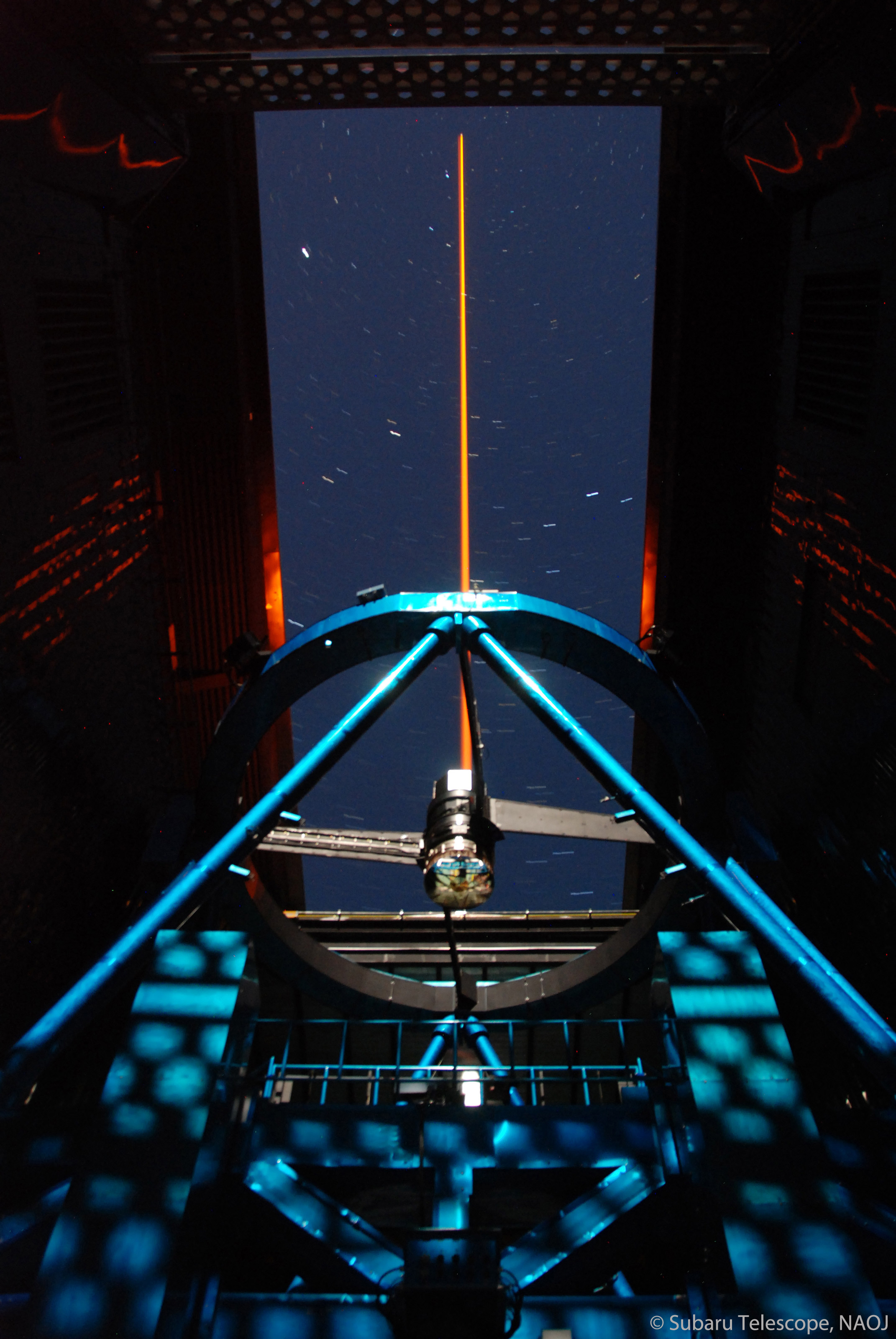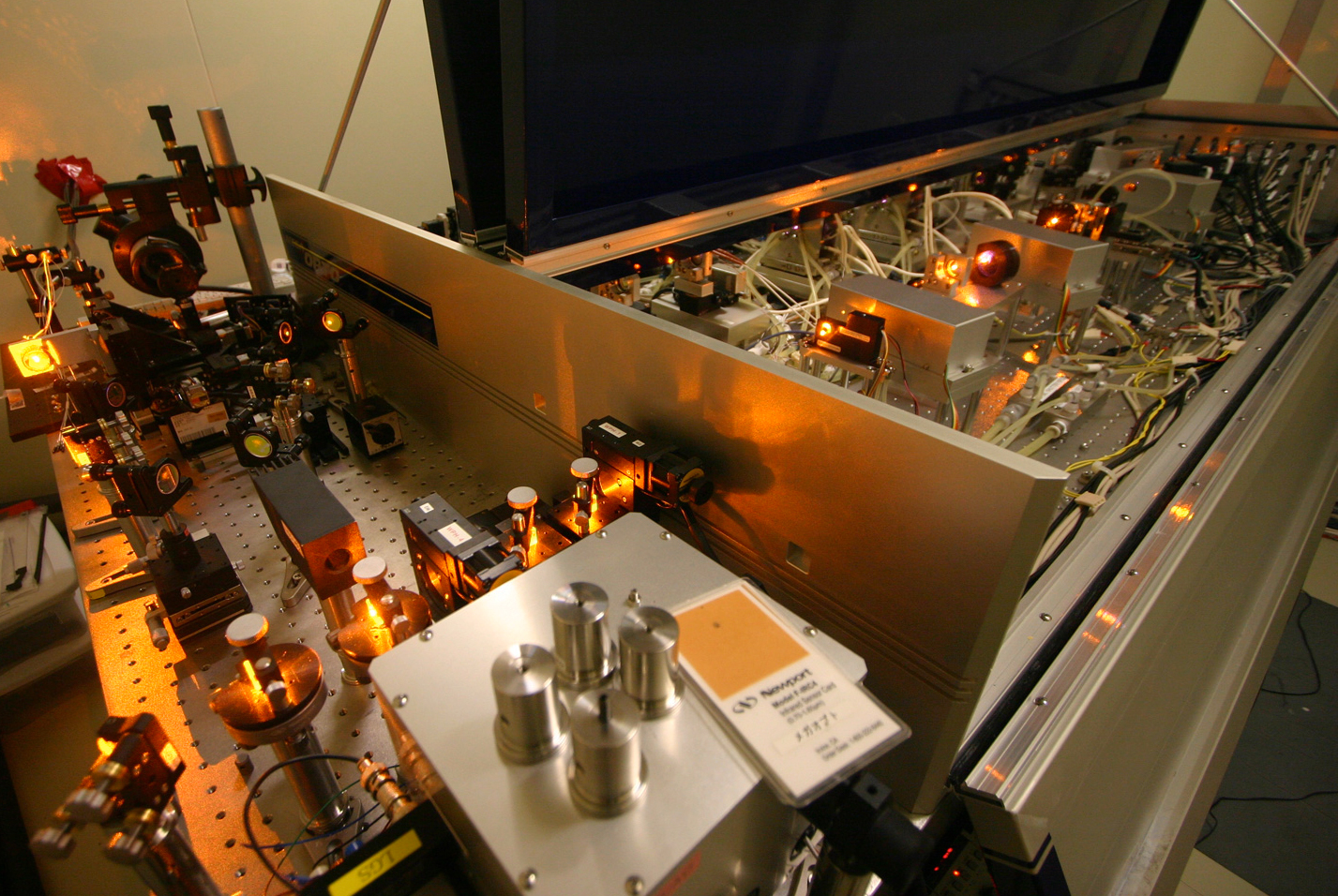AO188
(Adaptive Optics System with 188 Elements)
(Adaptive Optics System with 188 Elements)

This second-generation adaptive optics (AO) system is an integral part of Subaru Telescope's current and future suite of instrumentation. The AO system assists a science instrument in capturing images of very high resolution by correcting for the effects of atmospheric turbulence. It can operate with a natural star or with an "artificial star", i.e., a laser guide star. The system not only enables astronomers to study faint objects that were previously unobservable, e.g., far-distant galaxies, but also allows them to observe the precise structures of disks around stars and to detect exoplanets.

Fast Facts
- Definition:
- Second-generation adaptive optics system
- Main components
- A wavefront sensor that analyzes light from a guide star
- A beam splitter that channels the light to the wavefront sensor and the science instrument
- A 188-element deformable mirror capable of tiny adjustments to correct for the effects of turbulence
- Optimized for use with infrared cameras and spectrographs and being tested for use with optical instruments
- Operation:
- Compensates for atmospheric turbulence.
- Selection of a guide star (a point of light) near the target object to use as a reference for measuring and correcting for the effects of turbulence, e.g., blurring, twinkling.
- Passage of the guide star's light beam from the telescope's primary mirror to the wavefront sensor, which measures the wavelengths around targeted objects.
- The wavefront sensor sends the light to a beam splitter, which channels part of it to the science instrument and part, to the control system, which measures the degree of turbulence.
- Based on the control system's measurements, it adjusts the surface shape of the 188-element deformable mirror, which makes very fine corrections for the effects of turbulence, thus facilitating sharp, high-resolution images
- Because air is moving, the AO system is a dynamic one, always adjusting to current conditions, almost in real time.
- Can operate in two modes
- Natural guide star (NGS) mode, when a "natural" star is used for analysis of atmospheric turbulence.
- Laser guide star (LGS) mode, when an "artificial" star is created near the target object. When AO 188 is used with the LGS, it is referred to as LGSAO (laser guide star with adaptive optics).

Picture of the 188-element deformable mirror,
the diameter of which is 3.5 inches (90 mm)

- Applications:
- Always used with an instrument, e.g., IRCS, HiCIAO
- When used with another instrument, it contributes to:
- Studying objects that were previously unobservable, e.g., the detailed structure of faint distant galaxies, stellar populations of nearby galaxies
- Imaging the precise structures of disks around stars
- Detecting exoplanets
- Specifics:
- Size and weight
- AO188 optical bench/base plate: 2100 mm x 1720 mm
- Weight: 4872 lbs. (2210 kg)
- Placement: Nasmyth focus (IR)
- Wavelength: .6 to 5 microns (optical to infrared)
- Development:
- Subaru Telescope, NAOJ
- Notable: Subaru Telescope's LGS was the world's fourth laser guide star system for AO completed for an 8-10 m telescope, pioneering solid-state laser and optical fiber technology for AO.
- First generation AO 36 first light: 2002
- Second generation AO 188 first light: 2006
- Specialized Information about the Instrument and Observing:

